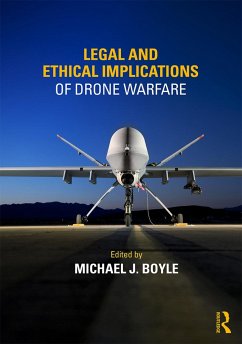
War on Terror
The Legal Dimension
Versandkostenfrei!
Versandfertig in 1-2 Wochen
101,99 €
inkl. MwSt.
Weitere Ausgaben:

PAYBACK Punkte
51 °P sammeln!
Examining the legal dimension of the war on terror, James P. Terry carefully explores the myriad juridical concerns that must be addressed in prosecuting a war with few established legal boundaries.














